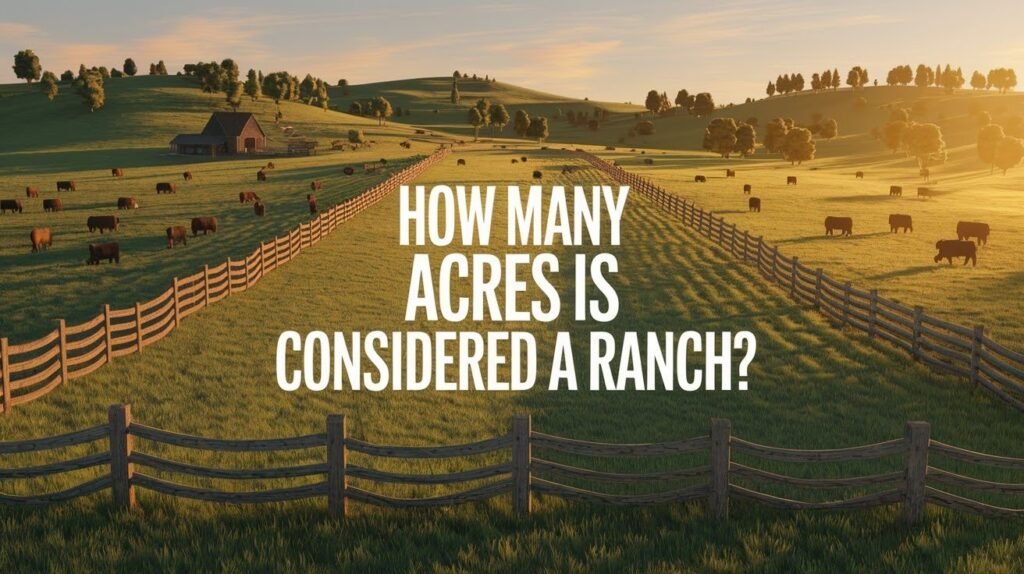When people think about ranches, they often imagine massive spreads stretching to the horizon. Movies and TV shows paint pictures of endless acres with cowboys riding into sunsets. But the reality of modern ranching is much more complex.
Ranch sizes vary wildly across the United States. Some operations run on just a few hundred acres. Others span hundreds of thousands. The “typical” ranch depends entirely on location, livestock type, and business model.
This guide breaks down real ranch sizes across different regions and industries. You’ll learn what factors determine ranch size and why bigger isn’t always better. We’ve researched data from agricultural surveys, land records, and working ranchers to give you accurate information.
If curious about buying ranch land, planning a career change, or just settling a debate, you’ll get clear answers about how big ranches actually are in today’s world.
Understanding the Basics: What is a Ranch?
Definition and Purpose

A ranch focuses primarily on raising livestock like cattle, horses, sheep, or goats. This sets it apart from a farm, which typically grows crops as the main business. While farms might have some animals, ranches center their operations around grazing animals.
The land itself serves a specific purpose – providing pasture and grazing areas for livestock. Ranchers manage grasslands, water sources, and fencing to support their animals throughout the year. This requires different skills and land management compared to crop farming.
Traditional vs. Modern Ranch Classifications
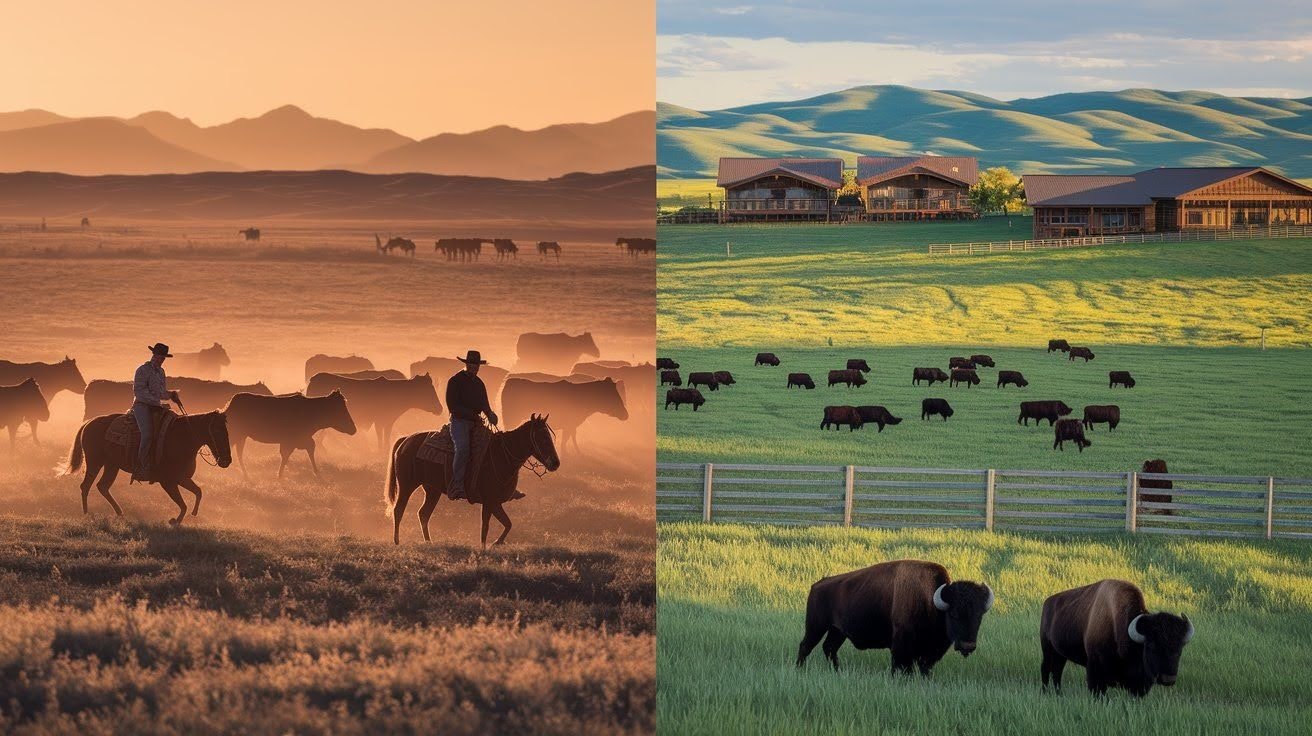
The classic image of ranching comes from the Old West – vast cattle operations spanning millions of acres across Texas and Montana. These massive ranches employed dozens of cowboys and ran thousands of head of cattle across open ranges.
Modern ranches are much more varied in both size and purpose. Many combine livestock with crop production, hunting leases, or tourism activities. Some focus on specialty animals like bison or exotic game. Others offer guest ranch experiences alongside traditional cattle operations. This diversification helps ranchers stay profitable in today’s economy while maintaining their core livestock focus.
How Land is Measured: Acres and Sections
What is an Acre?

An acre contains exactly 43,560 square feet. To put this in perspective, it’s roughly the size of a football field without the end zones. One square mile contains 640 acres, while one acre equals about 0.4 hectares in the metric system.
These conversions matter when comparing ranch sizes internationally or understanding land listings. American ranches use acres as the standard measurement, making it essential to grasp this unit when discussing ranch sizes.
What is a Section?
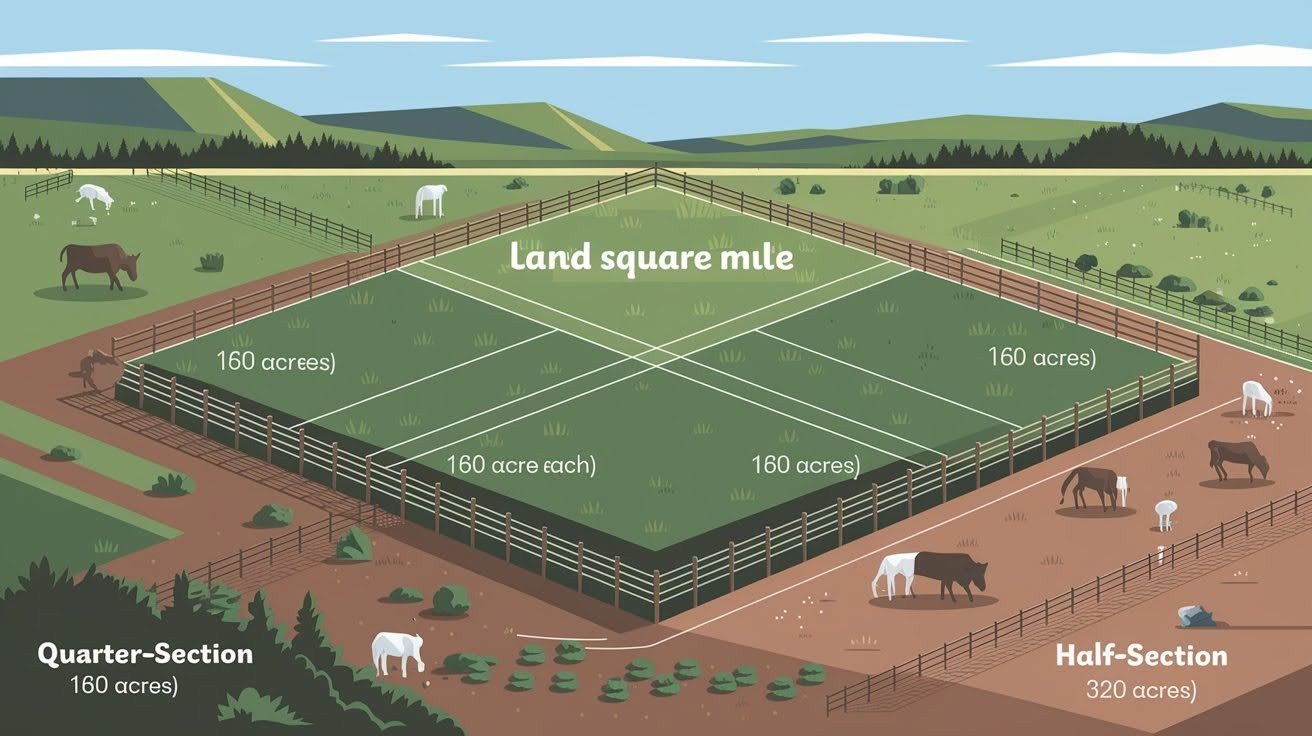
A section equals exactly 640 acres or one square mile. This measurement system originated from the Public Land Survey System used to divide Western territories in the 1800s. Many ranch boundaries still follow these original section lines today.
Sections provide a convenient way to describe large properties. When someone mentions a “quarter-section” ranch, they mean 160 acres. A “half-section” ranch covers 320 acres. This system makes it easier to visualize and compare ranch sizes across the American West.
Regional Variations
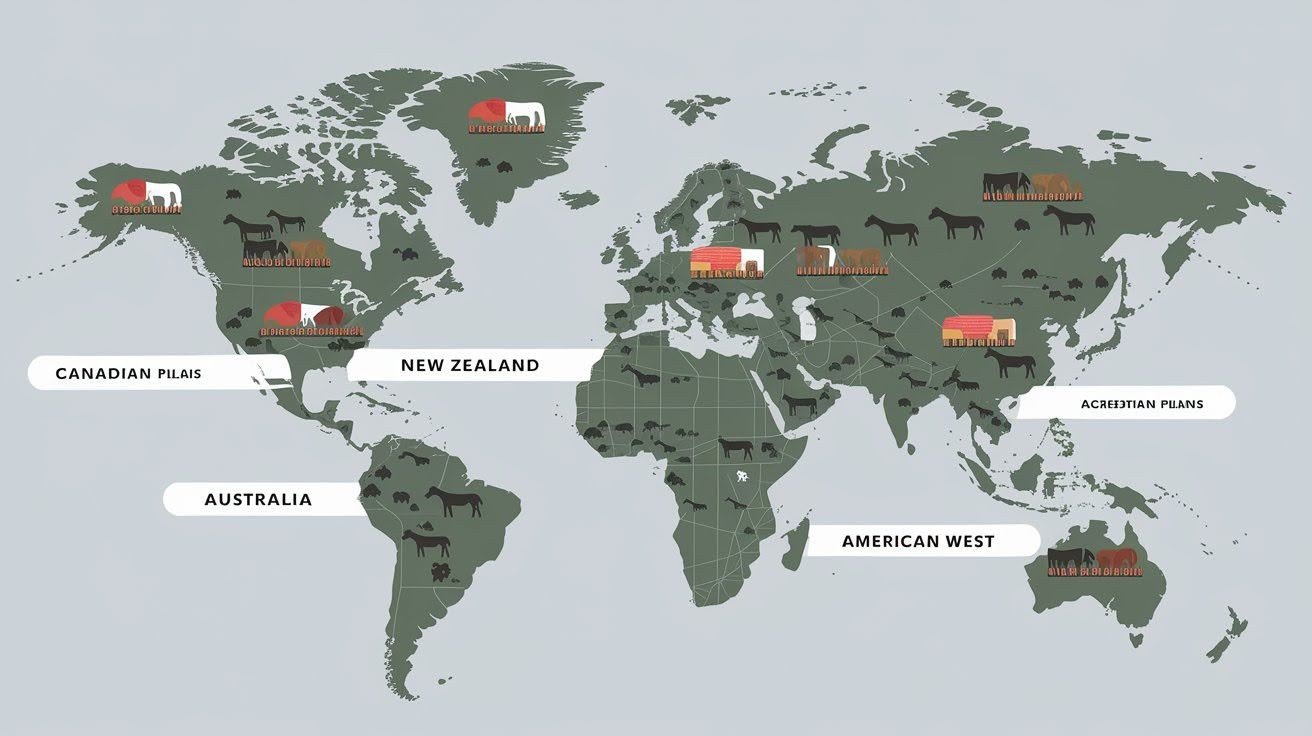
Different countries use different land measurement systems. Canada uses both acres and hectares depending on the region. Australia measures rural properties in hectares, while New Zealand uses both systems.
These differences matter when comparing ranch sizes globally or researching international ranch investments. Always check which measurement system is being used to avoid confusion about actual property sizes.
So, How Many Acres is Considered a Ranch?
General Guidelines
Most agricultural experts agree that a ranch typically starts around 450 acres in the United States. However, this number varies dramatically depending on your location, what animals you raise, and how you use the land.
A ranch in Montana might need thousands of acres to support the same number of cattle that a Texas ranch runs on hundreds of acres. Rainfall, soil quality, and grass types all affect how much land you need per animal.
Small vs. Large Ranches
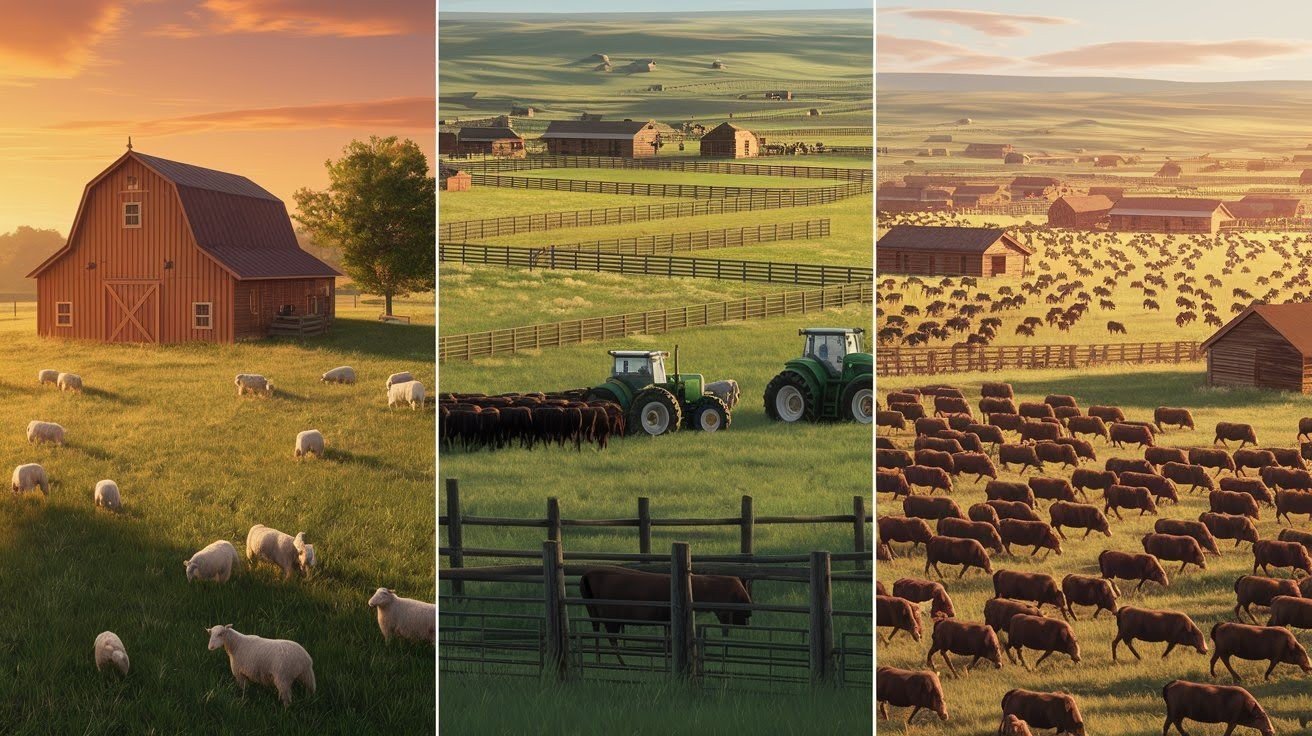
Small ranches usually range from 200-500 acres. These operations often focus on specialty livestock, direct-to-consumer sales, or combining ranching with other income sources. They work well for people starting in ranching or those near urban areas.
Mid-size ranches span 500-1,500 acres and represent many family operations across America. These properties can support a decent-sized cattle herd while remaining manageable for a small crew.
Large-scale ranches cover 1,500 acres or more, with some spanning hundreds of thousands of acres. These operations often run thousands of animals and may employ multiple families or crews.
Hobby or micro-ranches under 100 acres serve people who want the ranch lifestyle without making it their primary income. These smaller properties can still qualify as ranches if they focus on livestock production.
Ranch by Function, Not Just Size
Size alone doesn’t make a ranch. A 10-acre property that raises sheep, goats, or specialty cattle can legitimately call itself a ranch. The key is using the land primarily for livestock grazing and management.
Some small properties near cities operate as working ranches by maximizing their grazing efficiency and focusing on high-value animals or direct sales to consumers.
Factors That Influence Ranch Size Classification
1. Geographic Location
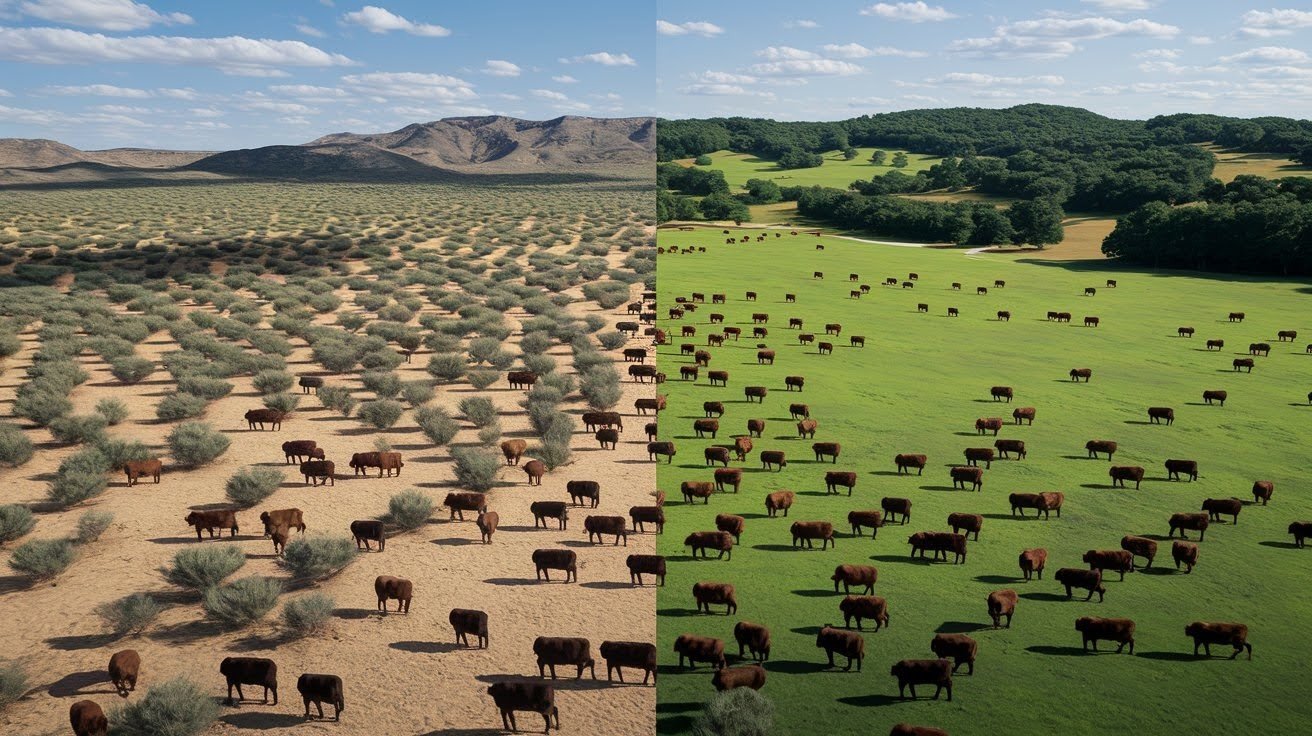
Terrain, water availability, and climate dramatically affect how much land you need for ranching. Western states with dry climates and sparse vegetation require much more acreage per animal than lush Eastern grasslands.
A ranch in Arizona might need 50-100 acres per cow, while a property in Georgia could support the same animal on just 2-5 acres. Mountain terrain also limits usable grazing space compared to flat prairie land.
2. Purpose and Land Use
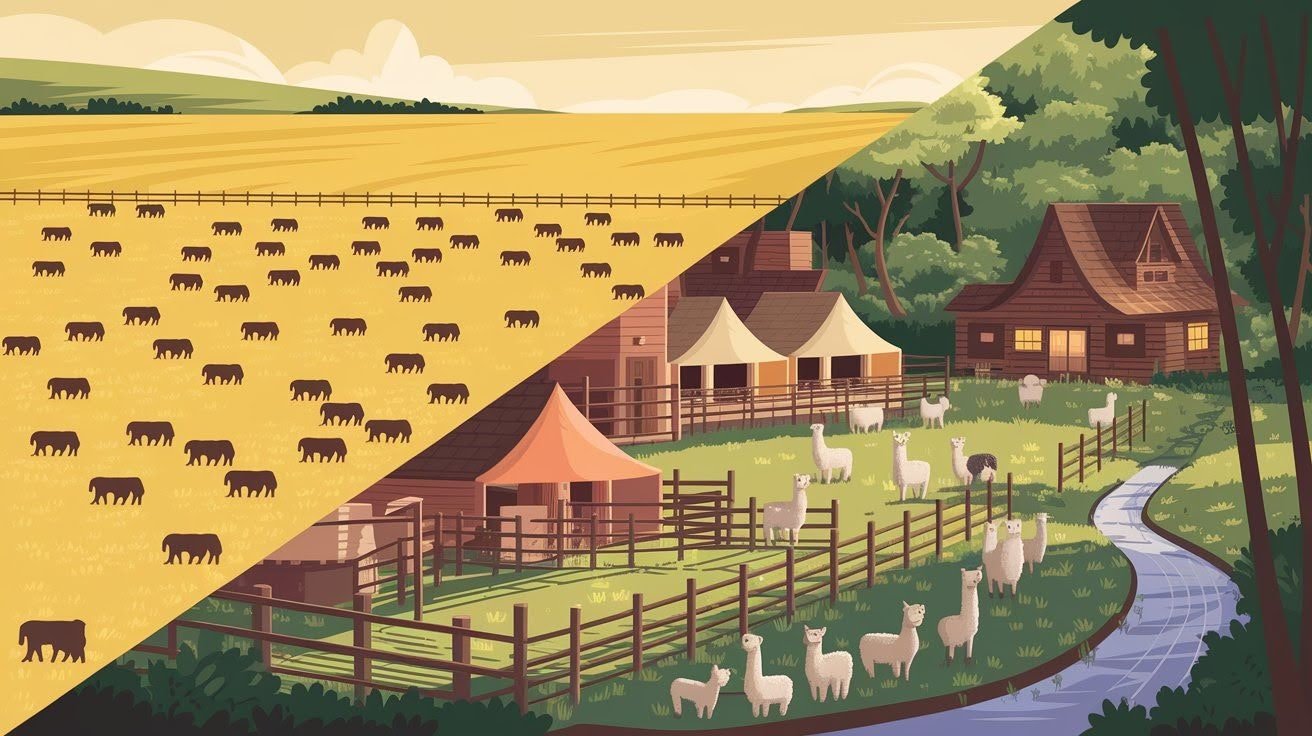
Livestock production requires different acreage than recreational ranching or specialty farming. Cattle operations need extensive grazing areas, while horse boarding facilities can work on smaller properties.
Recreational ranches often combine smaller livestock operations with hunting, fishing, or guest services. Specialty operations like alpaca or goat cheese production can generate good income from relatively small acreages by focusing on high-value products.
3. Economic Viability
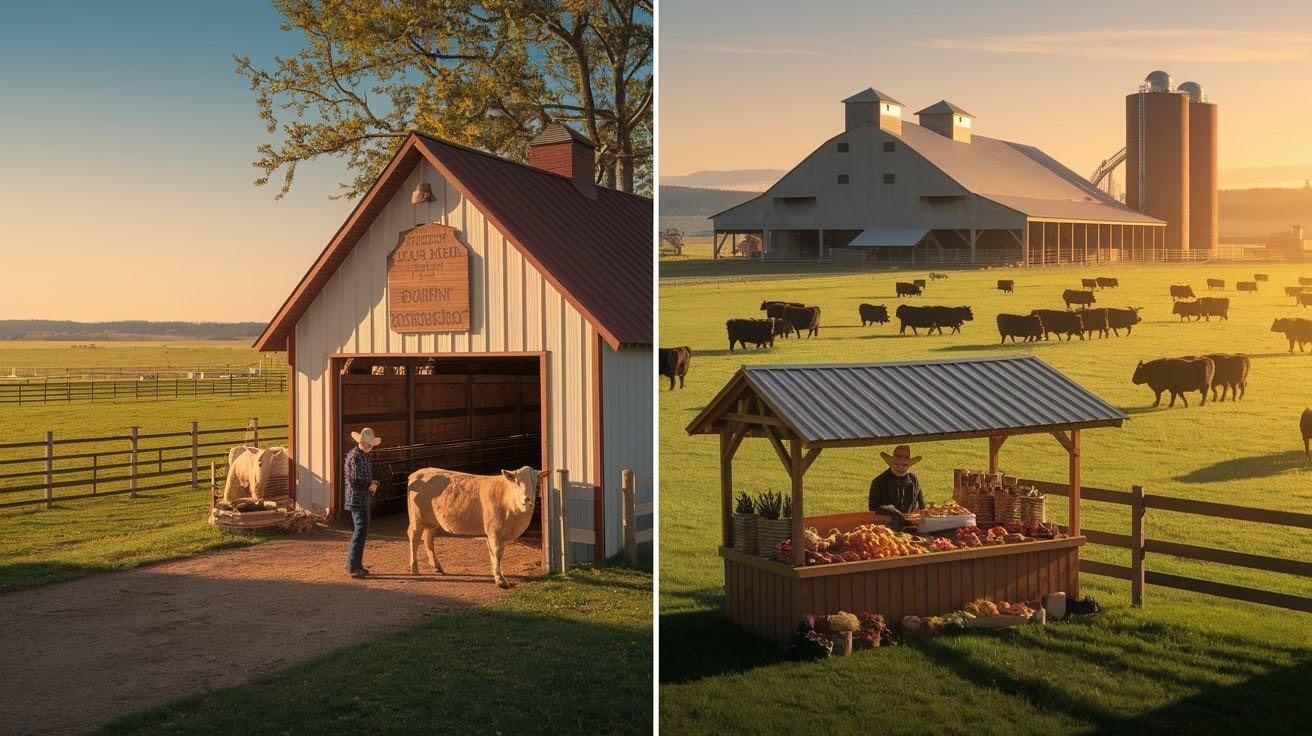
Profitability depends more on smart management than raw acreage. Small ranches can succeed by targeting niche markets, offering direct sales, or adding value through processing and marketing.
Large properties have economies of scale but also higher overhead costs. Many successful small ranchers focus on organic beef, agritourism, or specialty breeds that command premium prices from local customers.
4. Legal and Zoning Definitions
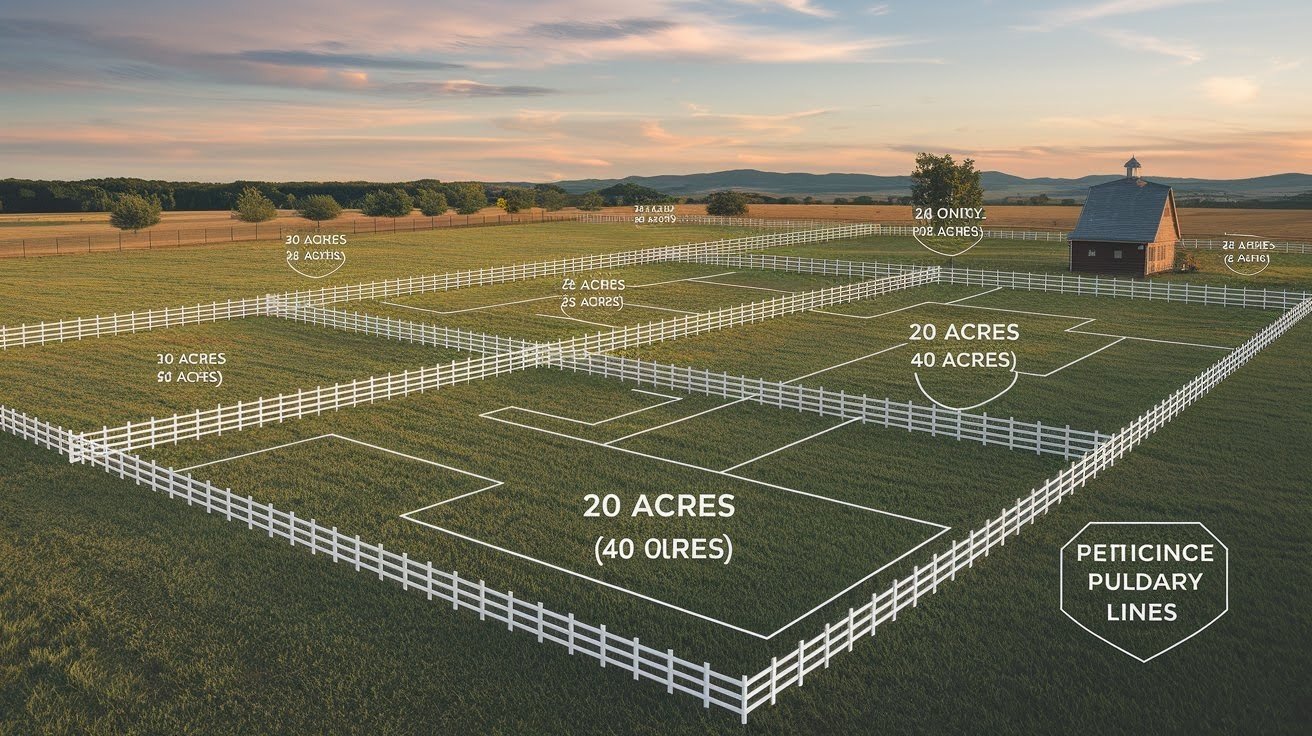
Local regulations often set minimum acreage requirements for agricultural zoning or ranch designations. Some counties require 10-40 acres minimum, while others have no specific size requirements.
Agricultural zoning affects property taxes, permitted uses, and building restrictions. Understanding your local definitions helps determine if your property qualifies for ranch status and associated benefits.
5. Land Fragmentation Trends

Urban sprawl continues breaking up large ranches into smaller parcels. Rising land prices force many ranchers to sell portions of their property, creating more small ranch operations.
This trend means traditional ranch sizes are shrinking in many areas. Properties that were once part of massive operations now function as independent small ranches, changing how we define ranch size requirements.
Pros and Cons of Small vs. Large Ranches
Small Ranches (Under 100 Acres)
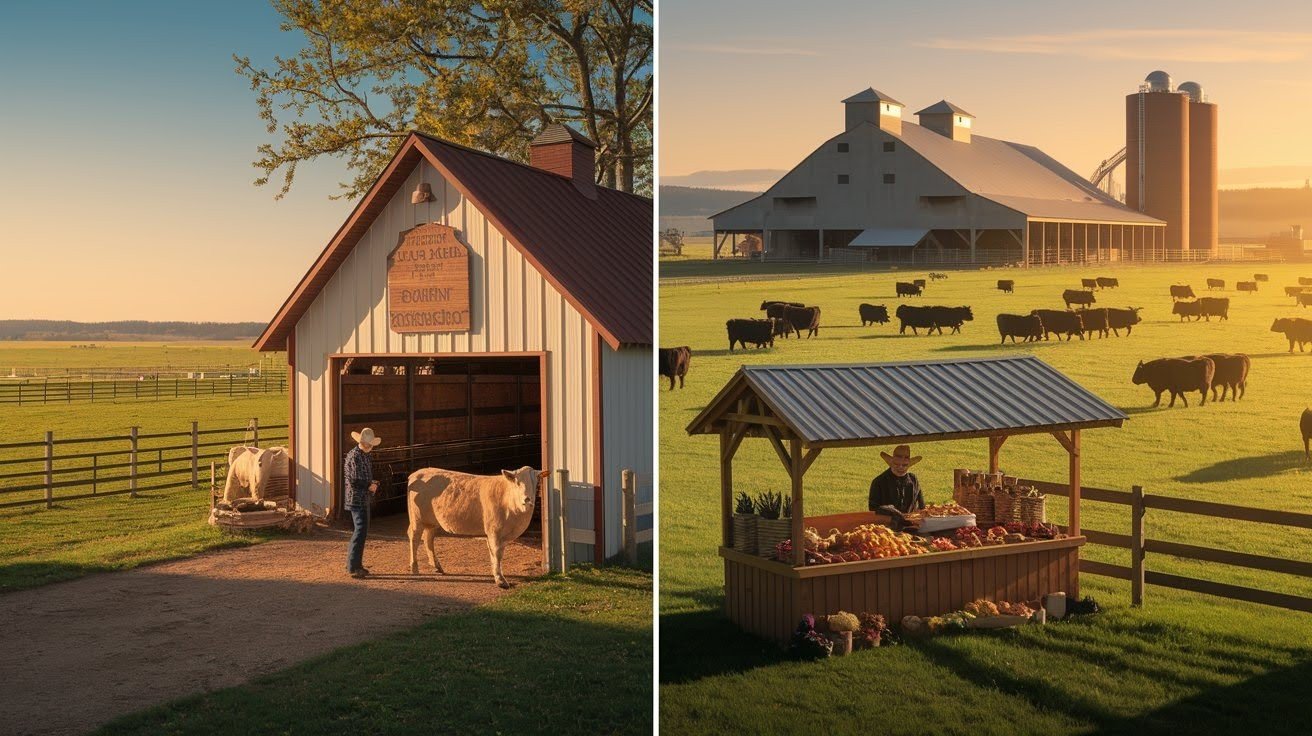
Pros:
Lower cost makes small ranches accessible to more people. You can often buy a smaller property without massive loans or investors, reducing financial stress and risk.
Easier management means one or two people can handle daily operations. You can learn ranching skills gradually without being overwhelmed by the scope of work required on larger properties.
More flexibility in land use allows you to experiment with different animals, crops, or income streams. You can quickly adapt to market changes or try new approaches without major disruption.
Cons:
Limited livestock capacity restricts your potential income from traditional ranching. You might only support 10-20 cattle instead of hundreds, limiting economies of scale.
Higher cost per acre means you pay more for each unit of land. Small properties often sell at premium prices compared to large ranch land on a per-acre basis.
Zoning limitations can restrict what activities you’re allowed to pursue. Some areas require minimum acreage for certain agricultural uses or livestock types.
Large Ranches (1,000+ Acres)
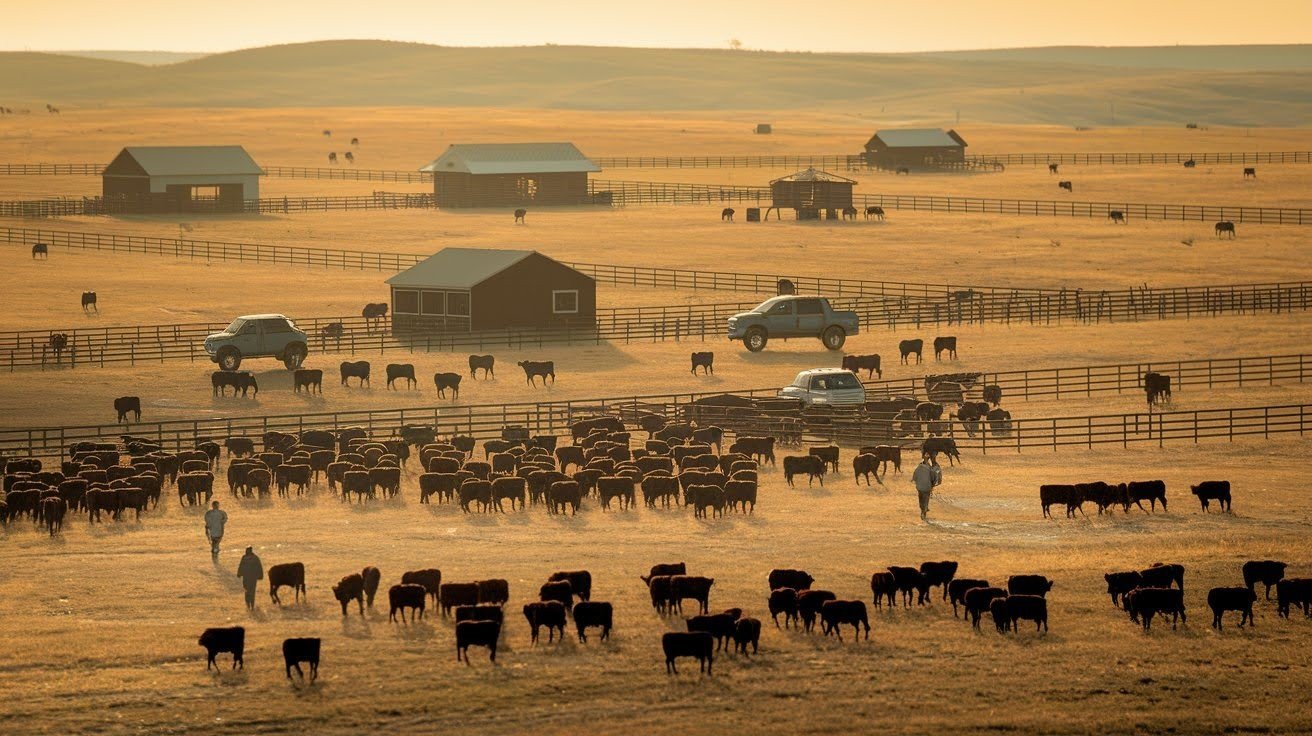
Pros:
Economies of scale reduce your per-unit costs for feed, equipment, and labor. Buying supplies in bulk and spreading fixed costs across more animals improves profitability.
Greater income potential comes from running larger herds and having multiple revenue streams. You can support more livestock and potentially lease land for hunting or recreation.
Long-term sustainability benefits from having enough land to rotate pastures, weather market downturns, and maintain operations during difficult years.
Cons:
High initial investment requires substantial capital or financing. Most people need significant loans, partners, or inherited wealth to acquire large ranch properties.
Complex management needs mean coordinating more moving parts, employees, and systems. You need advanced planning skills and often professional help with finances, veterinary care, and operations.
Conclusion
There’s no magic number that makes a property a ranch. A 10-acre operation raising specialty goats can be just as legitimate as a 10,000-acre cattle spread. What matters most is how you use and manage the land.
The real value lies in good stewardship – caring for the soil, water, and animals while building a sustainable operation. Smart management beats raw acreage every time. A well-run small ranch often outperforms a poorly managed large one.
Focus on your goals, budget, and local conditions rather than hitting some arbitrary size requirement. Whether you’re planning a weekend hobby ranch or a full-scale livestock operation, success comes from matching your land use to your economic purpose and management capabilities.
Frequently Asked Questions
What’s the minimum acreage needed to start a ranch?
There’s no universal minimum, but most successful ranches start around 10-20 acres for small livestock operations. The key is having enough land to support your chosen animals while meeting local zoning requirements.
How many cattle can I raise per acre?
This varies dramatically by location and grass quality, ranging from 1 cow per 2 acres in lush areas to 1 cow per 50+ acres in arid regions. Your local agricultural extension office can provide specific stocking rates for your area.
Do I need special permits or licenses to operate a ranch?
Most areas require agricultural zoning and may need livestock permits, brand registrations, or health certificates. Check with your county planning department and state agriculture office for specific requirements in your location.
Can a small ranch be profitable?
Yes, small ranches can be very profitable through direct sales, specialty products, agritourism, or niche markets. Success depends more on smart marketing and efficient operations than total acreage.
How much does ranch land typically cost per acre?
Ranch land prices vary widely from $1,000-$20,000+ per acre depending on location, water rights, and land quality. Remote areas and states with abundant ranch land typically cost less than properties near cities.


